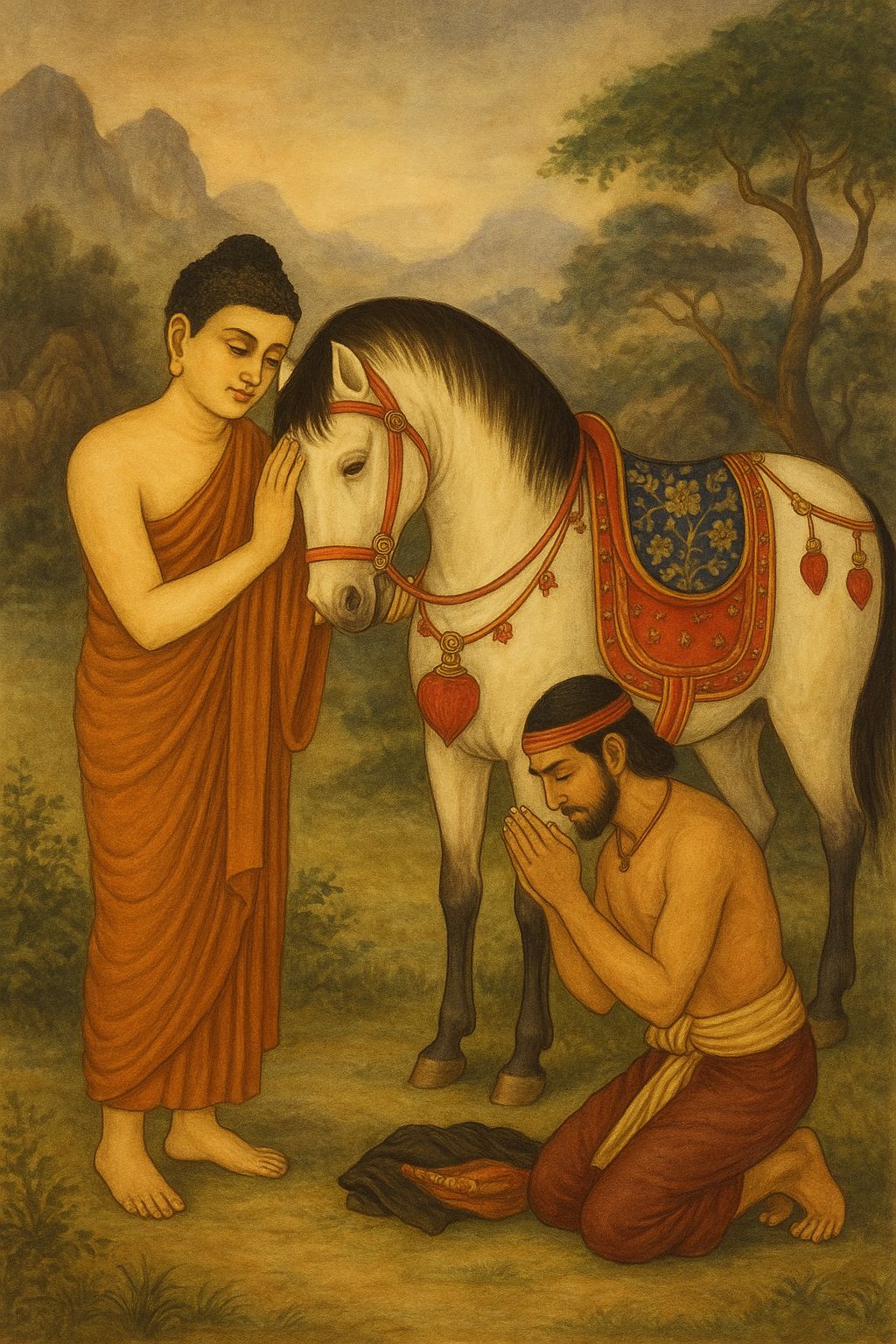
Kanthaka: The Horse Who Helped the Buddha
Share
Before the Buddha became a teacher, before he sat beneath the Bodhi tree, and before the silence of enlightenment settled over him, a horse existed. His name was Kanthaka, and for a long time, he stood in the background, a figure of strength and patience, waiting for the moment he would carry his rider away from a life of privilege and into the unknown.
Siddhartha Gautama was born into a royal family, surrounded by gardens, music, and the soft walls of luxury. His life was carefully shaped to avoid pain or uncertainty. The king, his father, believed that if the boy never saw suffering, he would never turn away from the throne. And for a time, that plan worked.
But the world outside the palace had its rhythms, and Siddhartha grew curious. When he finally stepped beyond the gilded gates, he saw things he could never unsee: an old man, a sick man, a corpse, and a wandering ascetic. These sights didn’t shock others, but they shook him deeply. They made him wonder, "If suffering is part of life, what's the point of all this beauty?"
In the quiet that followed, Siddhartha made a decision. It wouldn’t be a dramatic exit. There would be no royal announcement, no confrontation. Instead, he chose to leave in the stillness of night, carrying only the weight of his questions. He would walk away from everything, his title, his inheritance, his family, and begin a search for something no palace could offer: truth.
For that journey, he needed one companion. Kanthaka.
Kanthaka was not just any horse. He had carried Siddhartha since the prince was a boy. The old texts describe Kanthaka as white as a conch shell and tall enough to stand above the other royal steeds, making him more than just an animal in the stables. He was steady, loyal, and wise in a way only long-time companions can be. Siddhartha trusted him without hesitation.
Late that night, with only his faithful attendant Channa by his side, Siddhartha walked to the stables. Kanthaka was waiting. Some say the horse sensed the mood and moved without being told. Together, the three of them slipped out of the palace. The streets were silent, the moon high. Not a soul stirred as they crossed into the open world.
Kanthaka galloped, fast and silent. His hooves, which had once thundered in games and processions, now carried the weight of renunciation. There was no ceremony, no audience, only movement. When they reached the edge of the forest, Siddhartha dismounted.
He took off his princely ornaments and silk robes, and with a blade, he cut away his long hair. These were not just symbols of status; they were symbols of identity. To leave them behind was to step into the unknown with nothing but intent.
He handed everything, jewels, sword, and clothes, to Channa and told him to return. The journey ahead, Siddhartha said, was one he had to take alone.
There are no words recorded between Siddhartha and Kanthaka. Horses don’t speak, and legends don’t always need dialogue. But the moment is imagined by many as being full of feelings. The horse who had carried his prince in festivals, hunts, and parades now stood quietly as that prince walked away, not toward glory but toward solitude.
The story goes that when Kanthaka returned to the palace without Siddhartha, he refused food. In some versions, he died from grief. In others, he is reborn as a divine being, able to witness the prince’s awakening from afar. Both endings, though different, agree on one thing: his role, however brief, was meaningful.
Kanthaka’s part in the Buddha’s story isn’t loud or long. His role in the Buddha's story is not a prominent one. But without him, there would have been no Great Departure. No one else carried Siddhartha away. No one else stood still as the prince became a seeker.
In many depictions of that night, Kanthaka appears in the shadows, calm and white, the last familiar shape in a world about to change. His story is a reminder that beginnings often rest on quiet shoulders, that even those who don’t speak can help someone find their voice.
